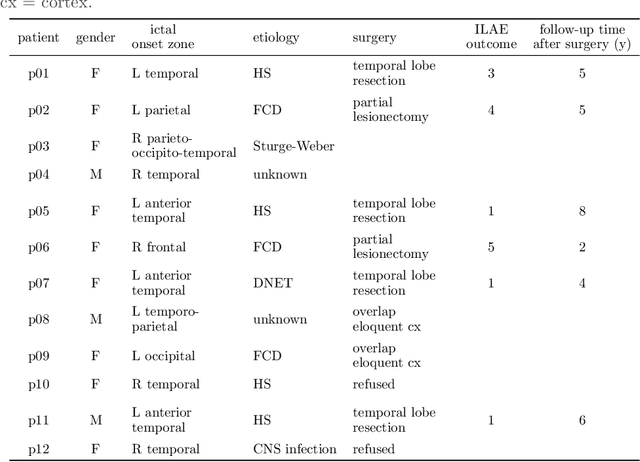Borbála Hunyadi
Efficient Patient Fine-Tuned Seizure Detection with a Tensor Kernel Machine
Aug 01, 2024Abstract:Recent developments in wearable devices have made accurate and efficient seizure detection more important than ever. A challenge in seizure detection is that patient-specific models typically outperform patient-independent models. However, in a wearable device one typically starts with a patient-independent model, until such patient-specific data is available. To avoid having to construct a new classifier with this data, as required in conventional kernel machines, we propose a transfer learning approach with a tensor kernel machine. This method learns the primal weights in a compressed form using the canonical polyadic decomposition, making it possible to efficiently update the weights of the patient-independent model with patient-specific data. The results show that this patient fine-tuned model reaches as high a performance as a patient-specific SVM model with a model size that is twice as small as the patient-specific model and ten times as small as the patient-independent model.
Augmenting interictal mapping with neurovascular coupling biomarkers by structured factorization of epileptic EEG and fMRI data
Apr 29, 2020



Abstract:EEG-correlated fMRI analysis is widely used to detect regional blood oxygen level dependent fluctuations that are significantly synchronized to interictal epileptic discharges, which can provide evidence for localizing the ictal onset zone. However, such an asymmetrical, mass-univariate approach cannot capture the inherent, higher order structure in the EEG data, nor multivariate relations in the fMRI data, and it is nontrivial to accurately handle varying neurovascular coupling over patients and brain regions. We aim to overcome these drawbacks in a data-driven manner by means of a novel structured matrix-tensor factorization: the single-subject EEG data (represented as a third-order spectrogram tensor) and fMRI data (represented as a spatiotemporal BOLD signal matrix) are jointly decomposed into a superposition of several sources, characterized by space-time-frequency profiles. In the shared temporal mode, Toeplitz-structured factors account for a spatially specific, neurovascular `bridge' between the EEG and fMRI temporal fluctuations, capturing the hemodynamic response's variability over brain regions. We show that the extracted source signatures provide a sensitive localization of the ictal onset zone, and, moreover, that complementary localizing information can be derived from the spatial variation of the hemodynamic response. Hence, this multivariate, multimodal factorization provides two useful sets of EEG-fMRI biomarkers, which can inform the presurgical evaluation of epilepsy. We make all code required to perform the computations available.
 Add to Chrome
Add to Chrome Add to Firefox
Add to Firefox Add to Edge
Add to Edge